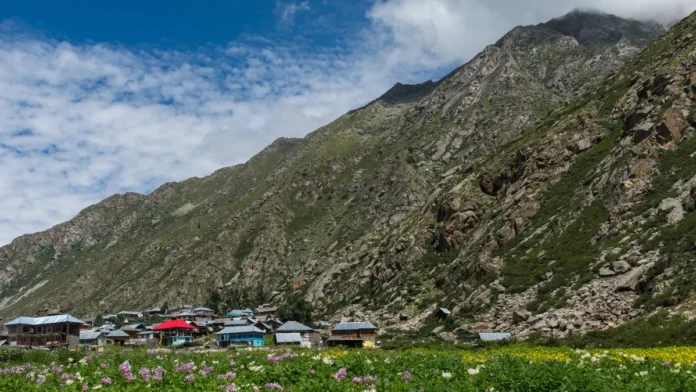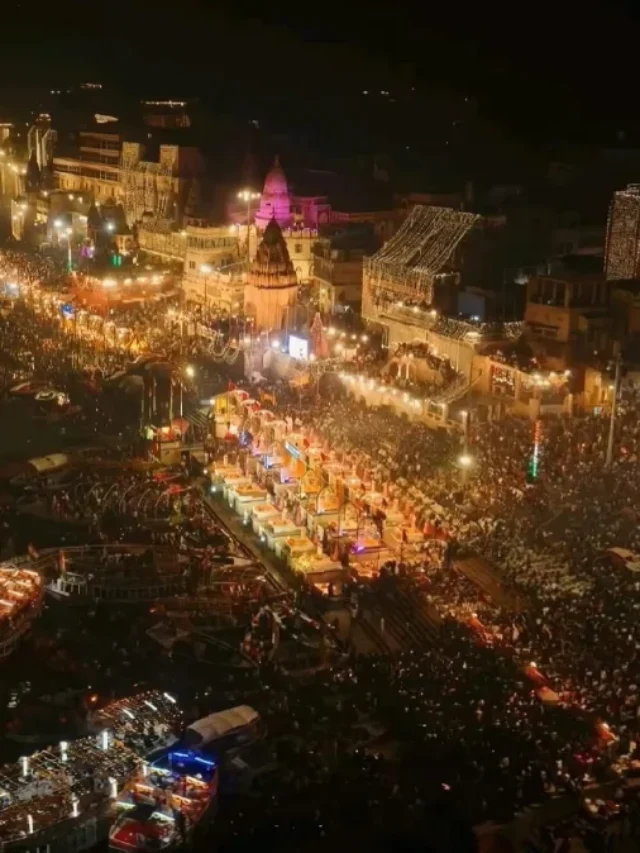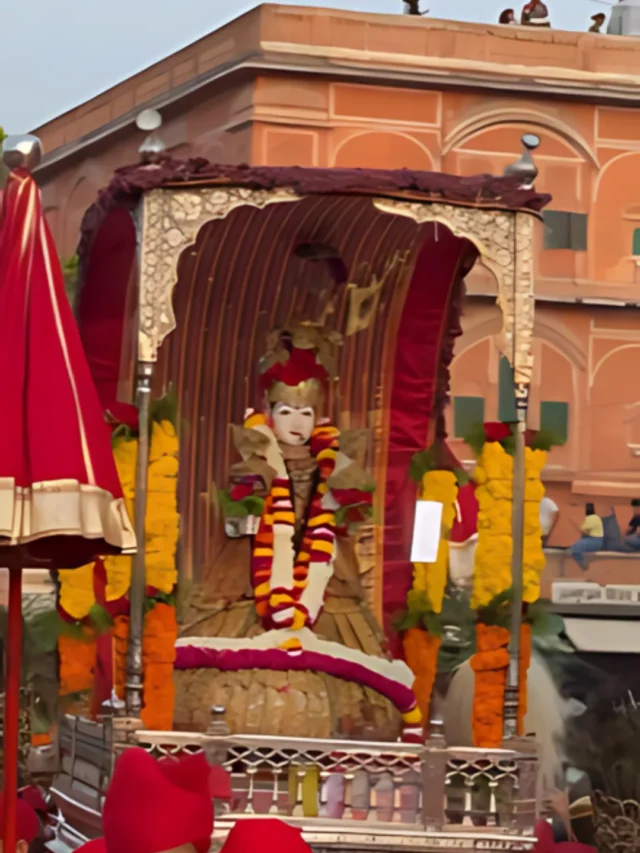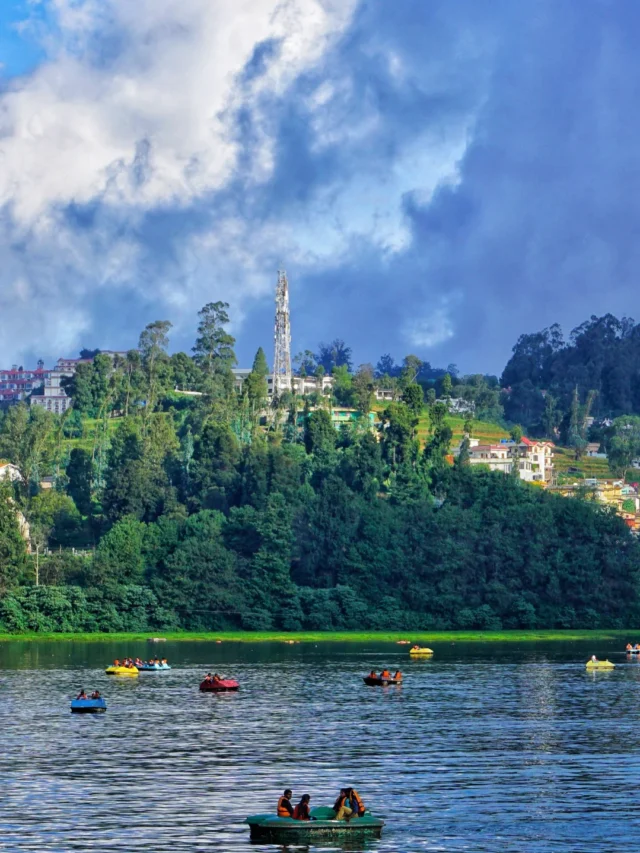Let’s take a trip to Chitkul in this blog – your perfect guide to the amazing last village of India!
Table of Contents
About The Last Village of India – Chitkul
Chitkul, a peaceful haven for travellers in the heart of Kinnaur Valley, beckons with the promise of exploration and adventure. Reaching Chitkul, which is perched at an amazing 11,319 feet above sea level, could be difficult, but the finest things in life are sometimes the hardest to achieve. Chitkul, elegantly cradled on the banks of the trickling Baspa River, presents its unparalleled beauty against the grand backdrop of Kinner Kailash. Chitkul, the last village of India on the India-Tibet border and the first habitation in Baspa Valley is an example of the craftsmanship of nature.
The scenery flows into a vision of snow-capped peaks on one side of the river and reveals a tapestry of apple orchards and wooden dwellings on the other, harmonically combining natural grandeur. Chitkul is enchanted with its guests, hidden behind a perfect layer of snow for most of the year. This is a difficult place to go, but the benefits are enormous and provide a haven from the hustle and bustle of the city.
Chitkul makes up for its small size with peace and breathtaking scenery. The wealth of tranquillity that permeates this Himalayan hamlet, which is made up of a few charming cottages, is the true treasure, not the things to attempt. Chitkul’s simplicity provides comfort to tourists looking for a break from the artificiality of city life. The hamlet may not have a lot going on, but it nonetheless draws those who are looking for a haven in the middle of unspoiled natural beauty.
For the most daring, Chitkul offers trekking trails that sculpt the untamed beauty of the surroundings. Memorable views may be expected on a day hike to the Nagashi ITBP post, which is only 4 km away, or from a longer trip to the Ranikanda Meadows, which is 10 km away. Continuing, the same journey reveals the Lamkhaga Pass, beckoning adventurers to discover the infinite possibilities of the Himalayas. Every step in Chitkul is an opportunity to explore the lesser-travelled routes of the magnificent natural sight.
Places to Visit in Chitkul, the Last Village of India
1. Mathi Devi Temple
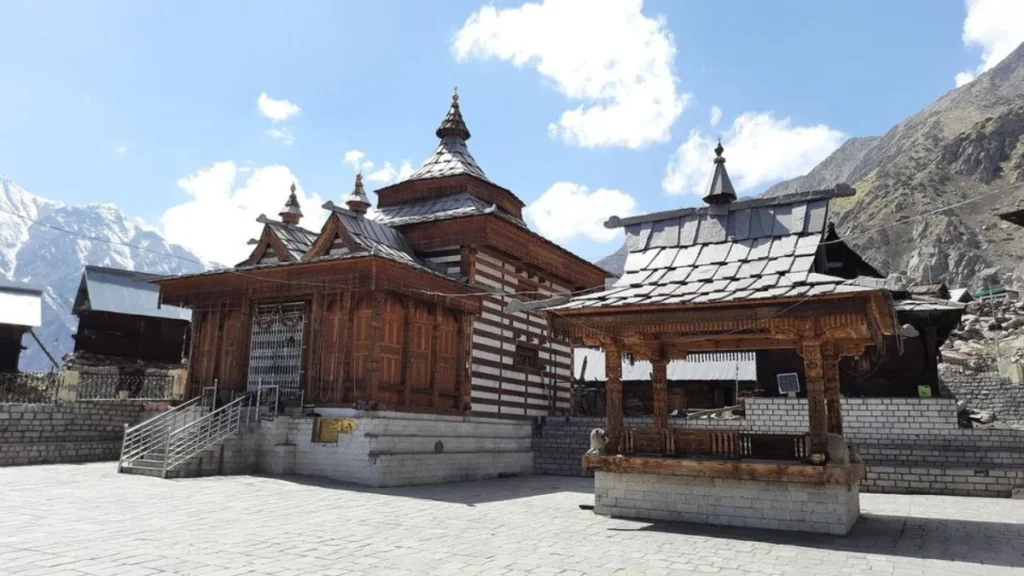
With its holy air, the Mathi Devi Temple enchants pilgrims as it stands magnificently in the charming village of Chitkul. It is a spiritual jewel. Respected as Chitkul’s protector god, this hallowed sanctuary is particularly dear to both residents and tourists. Often referred to as the “last village of India,” Mathi Devi Temple is the last house of worship on the Hindustan-Tibetan path, nestled at a height of 11,319 feet.
Seeking the blessings of Mathi Devi, who is revered as the guardian of Chitkul and its people, devotees swarm to this old temple. A genuinely holy environment is created by the temple’s tranquil surroundings, which include the soft murmur of the Baspa River and snow-capped mountains in the background. The Mathi Devi Temple is a sacred sanctuary on the edge of the subcontinent, drawing pilgrims not only because of the spiritual resonance of the building but also because of the ethereal beauty that envelops the last village of India.
2. Aakhiri Dhaba
Hungry travellers negotiating the difficult terrain will find a welcome reprieve at the Akhri Dhaba, a gastronomic paradise nestled on the banks of the Baspa River close to the India-China border. Perched at a whopping 3500 metres above sea level, this dhaba takes great pride in its label, which reads “Last Dhaba of India.” Being the last gastronomic refuge before the border, its strategic placement is what gives it its significance.
Guests may enjoy delicious meals and snacks while taking in the spectacular vistas that envelop the venue and tasting the flavours of the area. Nestled against the gentle flow of the Baspa River, The Last Dhaba of India—aptly named for its closeness to the border—becomes more than just a place to eat. It becomes an unforgettable experience for travellers passing through the high-altitude landscapes, offering local hospitality and sustenance.
3. Baspa River
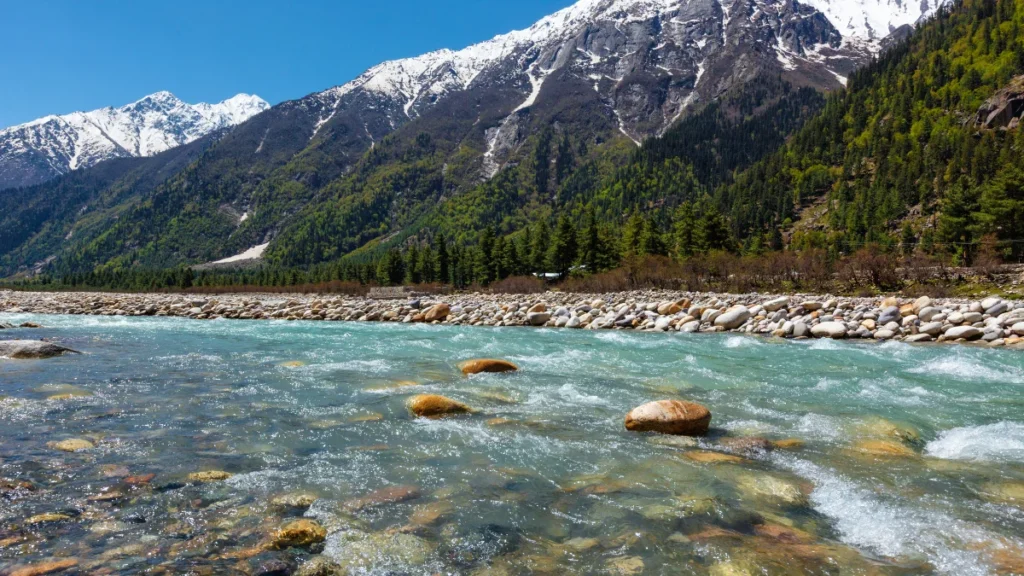
Take a calm stroll by the Baspa River in Chitkul, where the grandeur of nature blends with peace of mind. Taking a stroll offers a sensory experience that includes the opportunity to dip your hands into the chilly glacier waters that meander through the scenery. The glistening river reflects the blue sky, making for an enthralling sight, especially on bright days when sunlight plays over its surface.
Putting your hands in the cool water creates a sensory experience that lets you feel a close connection to the clean environment. Without taking in the splendour of this natural retreat—where the Baspa River transforms into a lyrical thread woven through your memories—a vacation to Chitkul isn’t complete. It is more than simply a stroll; it is a form of communication with the natural world and a deeply moving aspect of the Chitkul experience.
4. Treks of Chitkul
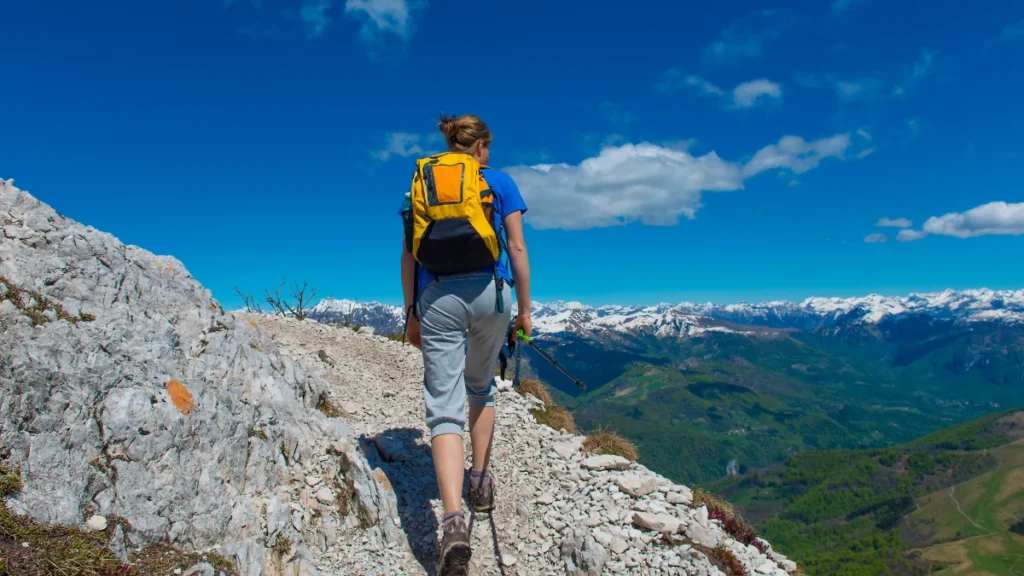
For those embarking on their journey of trekking, the Nagari ITBP trail is a mild introduction. This walk, which was created with novices in mind, highlights the area’s natural beauty without posing too much difficulty.
The 10-kilometer Rani Kanda Meadows trip has an entrancing mix of moderate and challenging routes. The breathtaking valley vistas that open up as you travel this road make every difficult step worthwhile.
Brave individuals looking for the ultimate challenge might go on the 17,880-foot-tall Borasu Pass trip. For those willing to confront the extremities of Chitkul, this path offers a once-in-a-lifetime experience with its small ridges, enormous rocks, and steep 90-degree slopes.
The Lamkhaga Pass hike is the ultimate challenge for the daring. This 15-day walk, known as the hardest path, requires tenacity and fortitude. Travelling around mid-May to June or after the rainy season guarantees an exciting tour of Chitkul’s untamed landscapes, rewarding the brave with views that will stay for a lifetime.
5. Kagyupa Temple
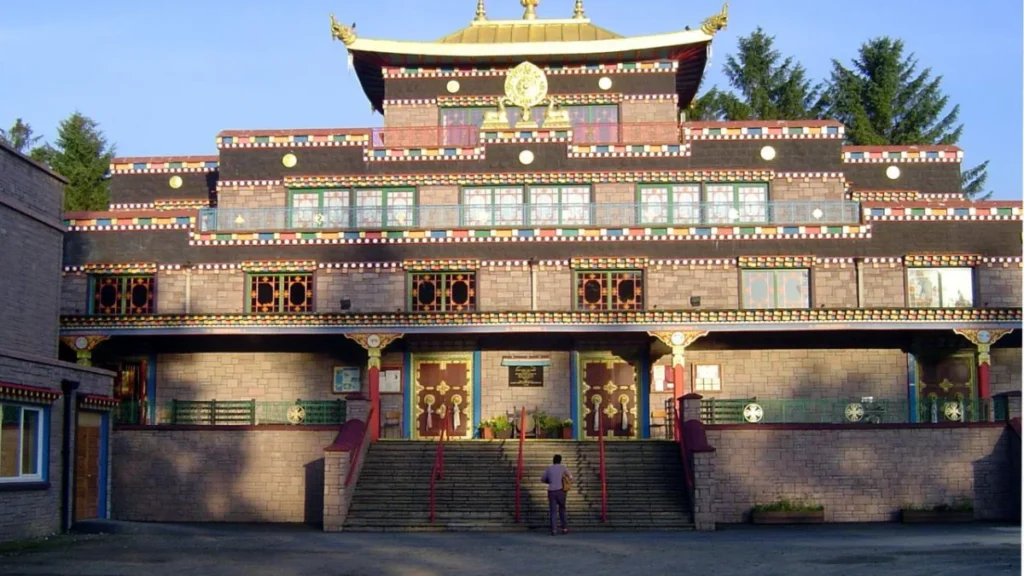
Tucked away in the peaceful surroundings of what is often called the “last village of India,” the Kagyupa Temple is a reminder of long-gone spiritual customs. The temple, which houses a fascinating statue of Shakyamuni Buddha, radiates ageless beauty. This hallowed place is enhanced by the exquisitely carved doors that display images of four monarchs facing different directions. These doors arouse admiration in the eyes of everyone who enters.
The Kagyu tradition, one of the six main schools of Tibetan Buddhism, is the temple’s foundation. It is a storehouse of cultural artefacts as well as a refuge for spiritual searchers. The Kagyupa Temple, situated in the tranquil surroundings of the last village of India, not only maintains the core teachings of Tibetan Buddhism but also provides an insight into the deep creativity and dedication that characterises this holy site.
6. Sangla Meadows
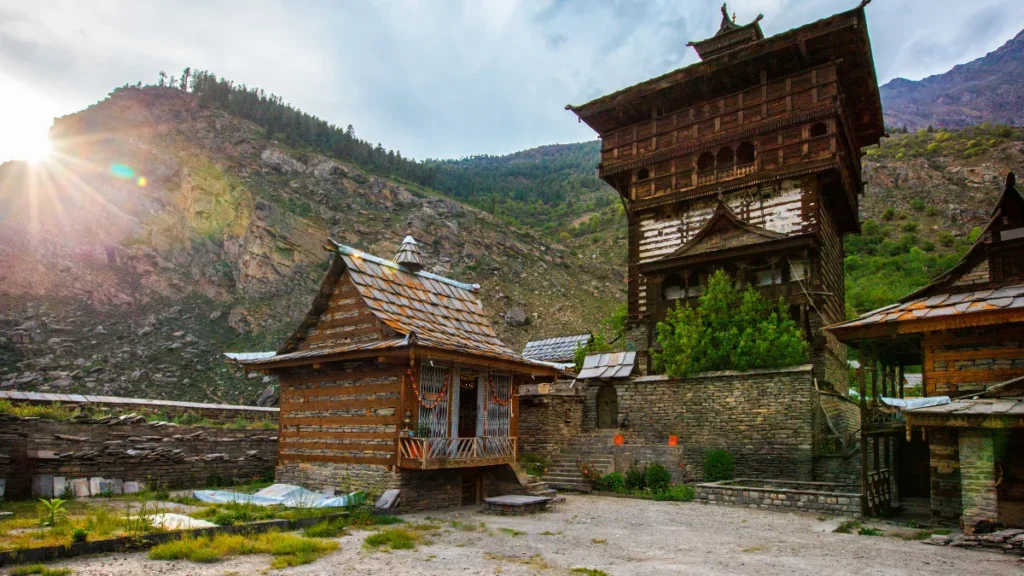
This charming getaway, tucked away in the Himalayas, enthrals with its breathtaking contrast of snow-capped mountain peaks and lush vegetation. The pure spirit of the towering peaks that serve as quiet sentinels to the amazing panorama below is carried in the fresh air. Apple orchards thrive in the lush surroundings, their abundant fruits and blooms lending a splash of colour to the otherwise tranquil scenery.
A captivating 180-degree panorama displays the majestic Kinner Kailash, a revered Himalayan peak, towering in all of its breathtaking splendour. The scene is nothing less than a beautiful symphony, with the opposing aspects of nature blending to create an unmatched haven of beauty. A vista that surpasses the ordinary is revealed in this Himalayan sanctuary by the combination of snow-covered peaks, vibrant vegetation, and the ethereal presence of Kinner Kailash. Every look is a voyage into the sublime.
7. Kamru Fort
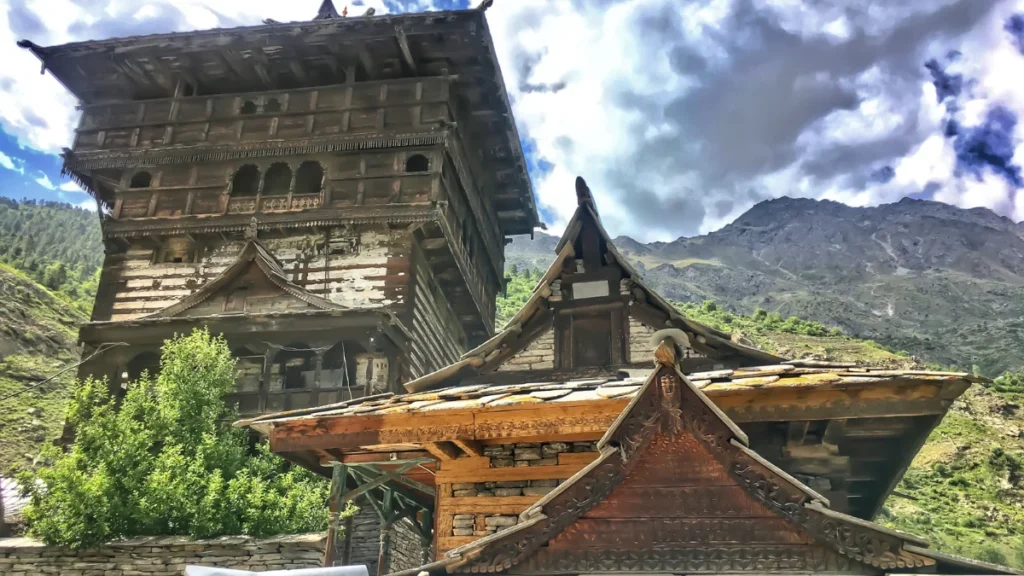
Located only two kilometres from Sangla Valley, Chitkul’s fort is a top attraction. With its unparalleled viewpoint, this stronghold offers sweeping views of the bucolic Sangla Valley, which is lined with apple orchards and winding streams. A large picture or symbol of Lord Buddha greets guests as they approach the front gate, signifying a calm and spiritually charged environment. Beyond its historical significance, the fort serves as a gateway to Chitkul’s natural beauties, where the valley’s grandeur is shown in the form of verdant apple gardens and the leisurely flow of streams, providing visitors with an engrossing and immersive experience.
8. Bering Nag Temple
The holy Bering Nag Temple is a cultural treasure that travellers to Sangla should take advantage of; it’s only a short bus or car ride away. The route to this holy location is not only a geographical one but a spiritual one that is interwoven with the local culture. The pilgrimage to Bering Nag Temple provides an insight into the rich culture of the Sangla Valley, regardless of whether you opt for the ease of a bus or the independence of a vehicle.
For those who are daring enough to go hiking in Chitkul, the route frequently passes by Bering Nag Temple. This historic temple serves as a reminder of the harmonious union of spiritual devotion and the spectacular natural beauty that hikers experience as they pass through the picturesque surroundings.
9. Tibetan Wood Carving Centre
Travel aficionados who like collecting cultural treasures will find a true paradise at the Tibetan Wood Carving Centre, which is tucked away on the outskirts of Sangla, close to the Saffron Farms. This centre is a shoppers’ paradise, calling everyone who wants to create memories of their travels with one-of-a-kind and genuine findings. The Tibetan Wood Carving Centre is a popular spot for shoppers, providing a wide selection of wooden goods that are deftly fashioned in the Tibetan manner.
The market’s most notable feature is its extensive collection of woodwork, which highlights Tibet’s rich creative legacy. This centre is a must-visit for anybody who values the fusion of culture and artistry. Visitors may take a piece of Tibetan art home with them, turning their trip into a priceless and tangible souvenir.
10. Brelengi Gompa
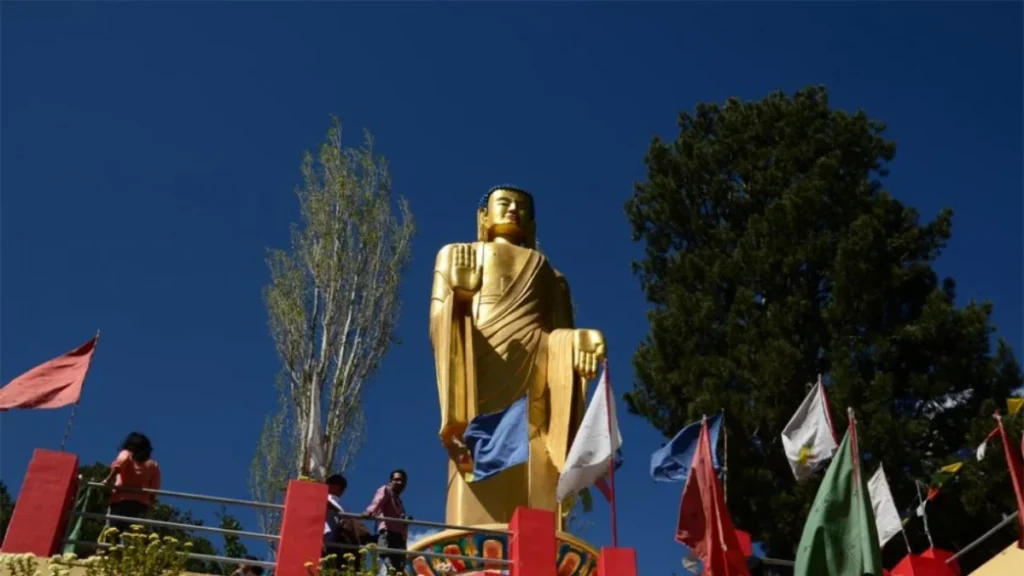
A fascinating must-see location, the Brelengi Gompa in Reckong Peo is a shining example of contemporary Buddhist architecture. Built by the Mahabodhi Society as part of their Kalachakra ceremony, the monastery is an amazing example of architecture. Equipped with wooden ceilings and walls, it transforms into a dynamic artwork that poignantly conveys stories of the revered Tibetan woodcarving tradition. A 10-meter-tall statue of Lord Buddha stands next to the monastery, looking peaceful and watchful over the undulating hills in the distance. In the heart of the Himalayas, the Brelengi Gompa offers not only a spiritual trip but also a visual feast where tradition and craftsmanship meet.
Best Time to Visit Chitkul
The best months are August and September. In these months, Chitkul becomes a dreamlike paradise as the Kinnaur Valley bursts into vivid blooms. The scenery takes on the appearance of a canvas painted in the colours of nature, providing an incredibly captivating visual display. The summer months of April through June are also ideal since Chitkul is at its most charming at this time, with crystal-clear blue sky and revitalising surroundings. This period offers you a pleasant retreat from the intense heat of the plains in Northern India, along with a warm welcome. Chitkul guarantees a natural rhythm experience, whether you visit in the middle of vibrant blossoms or the cool summer breeze.
Conclusion
Chitkul, the last village of India, is a beautiful place nestled in the Himalayas that offers a tranquil getaway from daily life. You must take this amazing trip here. Let us know in the comments when you plan to take it!


